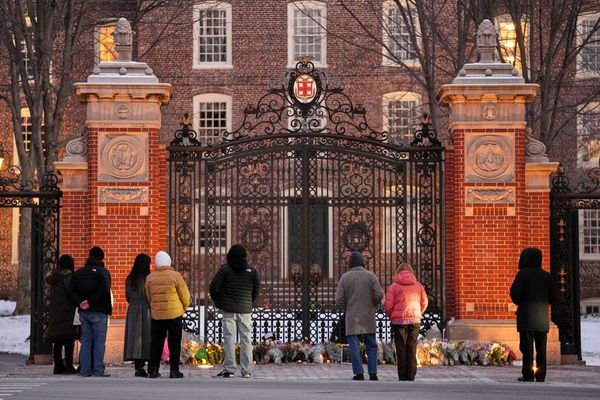
The author of this article has requested to remain anonymous.
The mass protests for democratic reforms in Hong Kong appear to have subsided. After the police arrested and imprisoned prominent pro-democracy activists, the movement, which had sent shockwaves across the world, has now run aground on the seemingly immovable authoritarian rock that is the Chinese Communist Party.
Many Hong Kong pro-democracy supporters have changed from fight to flight. The British government has expected their offer of residency to Hong Kong British National Overseas (BNO) passport holders to be potentially taken up by hundreds of thousands. With the pro-democracy movement now all but defeated, the parallels with another impassioned popular protest movement against the Chinese Communist Party (CCP) which also caught international media attention before being ruthlessly stamped out have become difficult to ignore.
The 1989 Tiananmen protests are among the most iconic symbols of popular resistance to authoritarian government of modern times: a symbol of pure democratic idealism being brutally crushed by an authoritarian regime. For those trying to understand why the Hong Kong pro-democracy movement has now been similarly crushed by the Chinese state, reflecting on the history of the Tiananmen protests might help to clarify the reasons for its failure. This is especially important given that the CCP, looking at the Tiananmen “Incident” with a cold eyed and self-interested pragmatism, has very much learned its own lessons from Tiananmen.
So what can we learn from this tragic episode in China’s modern history? One of the most prominent features of the Tiananmen protests was its nature as a spontaneous popular movement without centralized leadership. Growing out of an eruption of grief at the death of reformist former General Secretary Hu Yaobang, the Tiananmen protests were not initially an organized or coherent political movement. Only in the week after Hu’s death was a student union created in Beijing to provide the nascent student movement with leadership and direction. However, very few universities held open meetings for the formation of their unions, let alone elections. The result was that the organizations set up by the students, providing some loose leadership of the movement, for the most part lacked any real authority over the students they were meant to represent. At first, this was not a significant problem; indeed, it was even beneficial to the movement. When the movement began to flag in late April as dialogue with the government commenced and some students began to return to classes, the decision to embark on a hunger strike revived the movement and prompted a huge wave of support from all over China. The hunger strike was not proposed by any formal organization but rather was instigated by a group of charismatic student radicals. What started out as only a rally of a few hundred evolved into a wave of more than three thousand hunger strikers camped out in the Tiananmen Square. Many thousands more supporters joined out of sympathy for their cause.

The Hong Kong protests were also characterized by a similar lack of centralized leadership. In comparison to, for example, the U.S. Civil Rights movement, neither the Tiananmen nor the Hong Kong protests had a clear leading figure or institution organizing and directing events. Instead, both protest movements were made up of a plurality of organizations, while also relying upon the acts of independent groups and individuals. While in Tiananmen the lack of centralized, institutional leadership was mostly due to the inexperience of the students in organizing protests, the adoption of a decentralized leadership model in Hong Kong was intended to counter the tactics that had been used by the government during the 2014 Umbrella Movement, where the protests had been swiftly suppressed through the arrest of key individual leaders.
However, despite the success that this form of leadership brought to both protest movements in mobilizing mass enthusiasm and participation, it also brought serious problems. In the Tiananmen protests, the lack of formal student institutions vested with legitimate authority hamstrung the students’ attempts at negotiation with the CCP. With no formal leadership hierarchy or set of clear demands, the meetings between the students and the CCP quickly descended into chaos. Moreover, the lack of clear communication between the students who were negotiating with the CCP and those on the ground led to increasing distrust in the movement. With more and more students arriving in Beijing from all over China, any semblance of leadership evaporated and the movement spiraled out of control, hurtling towards a direct confrontation with the CCP. Similar problems emerged in Hong Kong, as the lack of centralized leadership made it almost impossible to prevent the at first peaceful protests from spilling over into violence and anarchy.
The lack of centralized leadership in both the Tiananmen and Hong Kong protests helped to create a division between moderates, who were afraid of provoking a backlash, and radicals who adopted a “do or die” approach, using more aggressive and even violent tactics. In the Tiananmen protests, the moderates were those who felt that winning an open dialogue with the CCP was enough and, as it became increasingly clear that the government was willing to use force against protesters, tried to persuade the protestors to leave the square in order to save lives and sustain the movement. However, the radical students were concerned that deescalating the protest would allow the CCP to ignore their demands or even make them easier targets for arrest and suppression. A bitter internal struggle emerged, especially in the week leading up to the massacre. In an interview on May 29, 1989, leading student radical Chai Ling called the student moderates “traitors” and said that she was “hoping for bloodshed” to provoke a nationwide uprising.
The Hong Kong protests in 2019-20 never saw the same division that directly paralleled the split between radicals and moderates in the Tiananmen protests, but there was a clear escalation of the protests as participants turned from peaceful tactics in the summer of 2019 to anarchic violence of the latter half of that year. Although support for the protests remained high, there were signs that the radicalization of the protestors and their tactics was alienating some moderate supporters of the movement, as well as providing an easy justification for the CCP to implement its draconian security law. The embrace of violence and self-sacrifice in pursuit of the movement’s goals in Hong Kong clearly mirrors Chai Ling’s and other radicals’ attitudes in the latter stages of the Tiananmen protests. In both scenarios, radicalization ultimately paved the way for a government clamp down, although it is also plausible that the CCP might have done this anyway. It is also important to appreciate the contributions such radicalization made in both cases in mobilizing and enthusing protestors as well as attracting global media attention. In Hong Kong in particular, the protestors’ radicalization was partially a response to the unflinching position of the CCP.

The CCP has learned lessons from the Tiananmen protests, and this has informed a different approach to Hong Kong. During the Tiananmen protests, the CCP, rocked by this unprecedented challenge and divided between hardline conservatives and sympathetic reformers, was forced by the huge numbers of protestors and solidarity shown by Beijing workers, residents, and the country at large to negotiate with the students. Although these negotiations were unsuccessful, they represented a real chance for the movement to extract meaningful concessions from the CCP. However, the breakdown of the dialogue between the students and the government, compounded by the failure of reformist General Secretary Zhao Ziyang to convince the students to leave the square before Soviet leader Mikhail Gorbachev’s planned visit in May, completely discredited the “soft” approach by reformists to handling the protests in the eyes of the CCP hierarchy. From that point on, a forcible repression of the movement was increasingly possible. The success of the final crackdown in silencing the pro-democracy movement has confirmed to the CCP that the key takeaway from Tiananmen is to not compromise or negotiate with dissidents, because this simply emboldens them. Instead, taking a hard line is more effective in containing unrest and preventing it from spreading.
This approach has defined the CCP’s attitude towards Hong Kong. Although the extradition bill that originally sparked the protests was ultimately withdrawn, Beijing’s line on the pro-democracy movement has always been starkly clear: dissent will not be tolerated. In contrast to Tiananmen, the idea of any leading CCP figure negotiating with Hong Kong protest leaders is so impossible as to seem absurd. This tough line from Beijing explained why the Hong Kong protests headed toward such a different direction than theTiananmen protests. While the Tiananmen protesters had some hope of enforcing their demands through direct engagement with the CCP, the Hong Kong protesters were disillusioned that Beijing would ever negotiate with them. This understanding served to radicalize the protestors, since the moderate line of negotiation was not open to them. When the Hong Kong police, unapologetic about inflicting violence on the protesters with the full support of the CCP, protesters had no choice but to take up arms.
History can be a slippery teacher. The lessons of the past rarely map straightforwardly onto the present. While Hong Kong’s pro-democracy movement continued into 2020 in the form of resistance to the national security law, by 2021 it seems that the fight for freedom is itself beginning to become history. Just like in the aftermath of Tiananmen, there will now be a period of reflection upon the momentous events that happened in the city. By putting Hong Kong’s story alongside the Tiananmen Square protests, we can draw out the features of both movements: the successes, the failures, and the differences. And most of all, we can see the importance of learning from the past in the continuing struggle for a better future.
READ NEXT: What David Graeber Means for Hong Kong and Taiwan
TNL Editor: Bryan Chou, Nicholas Haggerty (@thenewslensintl)
If you enjoyed this article and want to receive more story updates in your news feed, please be sure to follow our Facebook.







